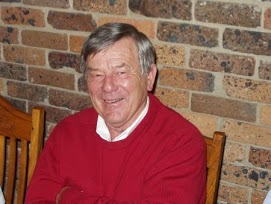
Warren Atkins was one of the originals, who with Peter O’Halloran, Jo Edwards and myself, ran the first competition in 1976, and he remained active throughout the period covered here through 2012. He was the first Chairman of our Problems Committee, and also resumed this position for many years from the time I became Executive Director in 1994 until 2011. He did many other things as a loyal worker for the Trust. He became in 1995 Chairman of the AMF Committee, and as such was a member of the AMT Board also until the end of 2012. He also edited WNMC’s Journal Mathematics Competitions from its beginnings in 1984 until 2004.
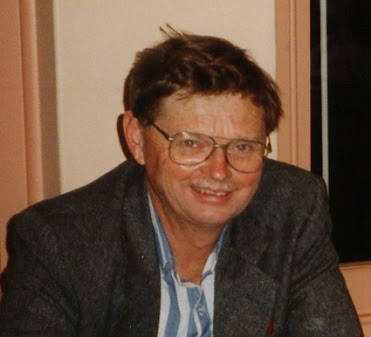
Bob Bryce, who retired as an Associate Professor after many years in the Department of mathematics at the ANU, was a long time volunteer of the Trust. He was a noted problem creator and was a 30-year veteran of the AMC problems committee, composing several of the most famous problems such as the 1983 socks and the Southern Cross problems discussed in Chapter 3. He also played a similar role of 23 years on the Challenge Committee. He was also one of the mainstays in organising and teaching at the Canberra Friday night sessions for talented students.
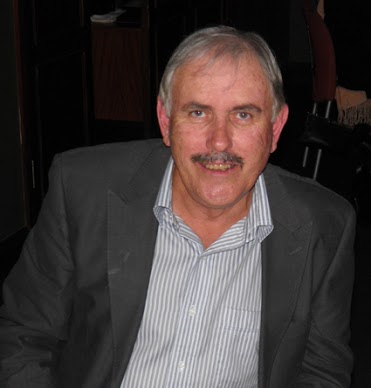
John Carty, for most of his working career Head of Mathematics at Canberra’s Merici College, a Catholic Girls secondary school, joined the AMC Problems Committee in 1980 and continued for the remaining 33 years of this history.
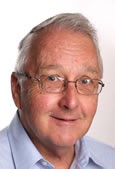
Terry Gagen, who retired as an Associate Professor at the University of Sydney, ran for many years an enrichment program on Friday nights for talented students at Chatswood. This program also had branches in several regional towns of New South Wales. Terry took over running the National Mathematics Summer School from Larry Blakers and ran it for many years, in fact decades.
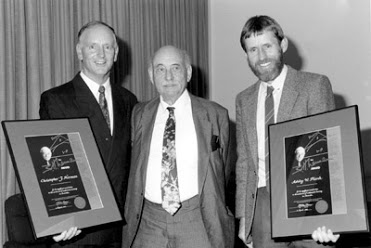
Christopher Harman, who retired as an Associate Professor at the University of Southern Queensland, Toowoomba, was a member of the AMC Problems Committee for 27 years. He is shown left receiving his BH Neumann Award from Professor Neumann with colleague Ash Plank at a function at the University of Southern Queensland, Toowoomba, June 1993.
Declan King was Head of Mathematics at Canberra’s Dickson College (a government Year 11 and 12 school) for a number of years and a member of the AMC Problems Committee for 12 years. I do not have a good stand-alone photograph of him, but he does appear in Chapter 3 in two group photos of the Problems Committee (1981 and 1982).
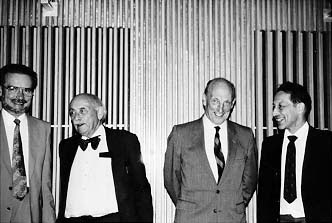
Laci Kovács (extreme left) and Mike Newman (extreme right) with Professor BH Neumann and Professor David Craig (President, Australian Academy of Science) after receiving their BH Neumann Awards in Canberra, April 1993. Laci was a Fellow in the Research School of Mathematics at the ANU for decades. Laci and Mike founded the Canberra Friday night enrichment group and ran it for many years until about 1988. Laci was at the original meeting to found the Canberra competition in 1976 and was a foundation member of the AMC Problems Committee. He was a winner in the early 1950s of Hungary’s prestigious Kurschak Competition as a student.
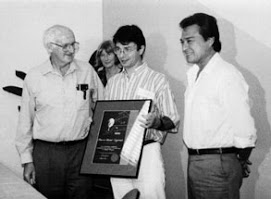
Pierre-Olivier Legrand receives his BH Neumann Award from Peter O’Halloran, Executive Director of the Trust (left) at a function in Tahiti in 1993. Pierre-Olivier was for 24 years the National Director of the AMC for French Polynesia and also served a term of 3 years on the Problems Committee. He was instrumental in establishing a French language version of the AMC.
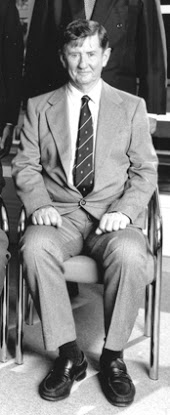
John Munro was for 25 years a Senior Lecturer in Mathematics at the Canberra College of Advanced Education, later the University of Canberra, and served on the AMC Problems Committee for 22 years.

Laci Kovács (extreme left) and Mike Newman (extreme right) with Professor BH Neumann and Professor David Craig (President, Australian Academy of Science) after receiving their BH Neumann Awards in Canberra, April 1993. Mike was a Fellow in the Research School of Mathematics at the ANU for decades and later a Professor. Laci and Mike founded the Canberra Friday night enrichment group and ran it for many years until about 1988. Mike was a Foundation Member of the Challenge Problems Committee and continued in this role through the remaining 23 years covered by this history.

Ash Plank, who retired as an academic in Statistics at the University of Southern Queensland, Toowoomba, was AMOC Editor for 11 years. He is also noted as co-editor with Neil Williams of AMOC’s top selling Olympiad syllabus book Mathematical Toolchest. He is shown right receiving his BH Neumann Award from Professor Neumann with colleague Christopher Harman at a function at the University of Southern Queensland, Toowoomba, June 1993.
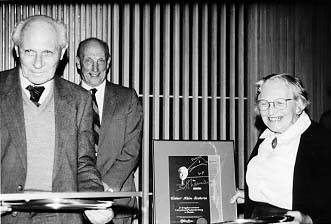
George Szekeres
Born Budapest 1911, died Adelaide 28 August 2005
Esther Klein Szekeres
Born Budapest 1910, died Adelaide 28 August 2005
Other than Bernhard Neumann, George and Esther Szekeres (seen above receiving their BH Neumann Awards of the Australian Mathematics Trust in 1993) were the other two great nonagenarian Australian mathematicians in recent years, all three having established their mathematical traditions in Europe before having to make their way out during the 1930s and eventually finding themselves in Australia.
George and Esther first met in a mathematics club in Budapest in 1933 and were married in 1936. They escaped the nazi persecution just in time and arrived at a safe refuge in Shanghai where they stayed during the war. After the war George was offered a lectureship at the University of Adelaide, which he took up in 1948. In 1963 he moved to Sydney to take up a chair at the University of New South Wales. He remained in this position until retirement in 1976.
George remained active in research, still working in an office in UNSW until well after his 90th birthday, where he continued to produce significant results. Only in 2004 did they return to live in Adelaide, where both of their children lived and also Esther’s close life long friend Marta Sved (who has in turn since died in Adelaide later in 2005).
Esther and Marta were in the same class at a high school in Budapest and both loved mathematics. Because of quotas only one of them could participate in the national mathematics competition, while the other in the equivalent physics competition. It became history that Marta ended up writing the mathematics competition and finished in the honour list in third place. Number one student in that year, 1928, was George Sved, who later became Marta’s husband.
After retirement George became very active in helping set up Australia’s Mathematics Olympiad structure, particular with the training. George was Deputy Leader of the Australian team in its first years and did much of the training, especially for the students in Sydney. George’s Sunday nights at this time were always reserved at home for students who visited him to work through training problems.
While at UNSW George was the strongest influence in establishing the school mathematics magazine Parabola, modelled on similar ideas he had brought from Hungary. Parabola is still published today, via an editorial team from UNSW, but now this magazine is published by the Australian Mathematics Trust, and the equivalent Monash magazine Function has been merged in with it.
Esther, like her friend Marta, had a strong teaching commitment. She joined the staff of Macquarie University and was one of the best known academics there during her career.
Known in Hungary as Esther Klein (her maiden name), Esther was featured in the recent film on the life of Paul Erdös, the most famous Hungarian mathematician, who was a friend of both George and Esther, which resulted in Erdös often visiting Australia.
Esther was active in other enrichment activities and was one of those teachers who most frequently worked with the Chatswood enrichment program organised by Terry Gagen.
Both George and Esther had many other interests, including music and art. George in fact played viola in the Ku-rin-gai Philharmonic Orchestra, and both enjoyed bushwalking.
Significantly, both George and Esther have composed separate problems which were set in International Mathematical Olympiad papers.
George was made a Member of the Order of Australia (AM) in 2002.
They are survived by son Peter, who is an mathematical physicist at the University of Adelaide, and daughter Judy.
Peter Taylor
December 2005
(with acknowledgement to information published in the Sydney Telegraph and the Adelaide Advertiser for some details.)
Peter was one of a small group then based at Canberra College of Advanced Education which founded what became the Australian Mathematics Competition in 1976. He was Chairman of its Problems Committee from 1979 and of the AMC committee since 1976. In 1988 he was approached to run the Tournament of Towns and ran it for the first time outside the Soviet Bloc in Canberra in 1988, from which it grew in the West and he organised all the papers and solutions in English from the start of this competition in 1980.
